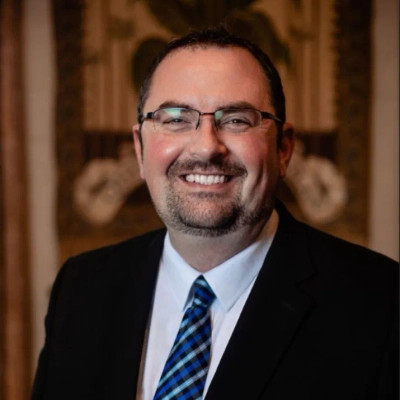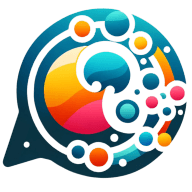15 Benefits of Social Listening in Customer Relations
In today's digital age, social listening has become an indispensable tool for businesses seeking to enhance customer relations. This article delves into the numerous benefits of social listening, drawing on insights from industry experts and real-world case studies. From proactive problem-solving to anticipating client needs, discover how leveraging online conversations can transform your approach to customer engagement and drive business success.
- Proactive Problem-Solving Through Social Media Monitoring
- Leveraging Community Feedback for Service Improvements
- Addressing Gaps in Outreach with Online Insights
- Anticipating Client Needs Through Forum Discussions
- Engaging Directly with Users to Build Trust
- Using Forums as an Early Warning System
- Meeting People in Crisis on Digital Platforms
- Community Involvement Drives Local Business Success
- Enhancing Pet Care Services with Online Insights
- Aligning Church Ministries with Community Needs
- Turning User-Generated Content into Case Studies
- Improving Products Based on Social Media Feedback
- Uncovering Authentic Customer Language and Sentiment
- Adapting AI Business Strategy to Public Sentiment
- Tailoring Franchise Resources to Online Conversations
Proactive Problem-Solving Through Social Media Monitoring
For a long time, our customer relations strategy was reactive. We would only hear about a customer's problem when they called or sent an email. By that point, they were already frustrated, and we were always playing catch-up. We knew we had to find a way to get ahead of the problem.
Social listening plays a crucial role in our strategy because it allows us to be proactive, not reactive. The key is to find a customer's problem before they even tell us about it.
My marketing team spends a small amount of time every day in the social media communities where our customers talk about our industry. They're not there to sell. They are there to listen for problems. For example, a customer might post a message about a specific challenge they're facing with a product. The marketing person, instead of just responding, brings the problem to our operations team. We then get ahead of the issue. We'll send the person a message, "I saw you were having a problem with X. We have a guide that might help you."
The impact this had was a massive increase in our customer satisfaction and loyalty. We were no longer just a company that was putting out fires. We were a company that was proactively solving problems. My advice is that social listening isn't just about what people are saying about your brand. It's about what people are saying about your industry. The best way to build a great relationship is to be a human who is willing to listen and be there for them.

Leveraging Community Feedback for Service Improvements
Social listening has become a key tool for identifying patient concerns before they escalate into formal complaints. Beyond monitoring direct mentions, we track broader community conversations about access to care, wait times, and communication styles. One specific example involved recurring posts in a local Facebook group where residents voiced frustration about difficulty reaching medical offices by phone. Although our practice was mentioned only once, we treated it as an early signal.
We responded by auditing our phone system and discovered peak-hour bottlenecks. Within weeks, we extended callback hours and added an option to request appointments online. Follow-up monitoring showed that the complaints in the group dropped, and patients noted improved accessibility in satisfaction surveys. Social listening in this context functioned less as a marketing tool and more as an informal feedback channel that gave us a clearer picture of real-world patient experience outside the exam room.

Addressing Gaps in Outreach with Online Insights
Social listening provides an unfiltered view of how supporters perceive both needs and impact. One practical use has been monitoring community Facebook groups where conversations about foster care, adoption, or local volunteer opportunities naturally occur. Noticing recurring questions—such as uncertainty about how to start the licensing process—revealed gaps in outreach materials. In response, the organization created a simple explainer post and shared it across channels, which quickly became one of the most engaged pieces of content. That adjustment not only addressed confusion but also positioned the organization as approachable and resourceful. Social listening in this way shifts communication from reactive to proactive, turning everyday conversations into guides for clearer, more meaningful engagement.

Anticipating Client Needs Through Forum Discussions
Social listening serves as an early warning system for shifting client concerns. By monitoring conversations about land ownership and financing on local forums and social platforms, we can identify recurring questions before they reach us directly. For example, when we noticed a spike in discussions about rising utility connection costs in rural areas, we created educational content that addressed the issue and highlighted properties with established hookups.
This proactive approach reassured prospects that their concerns were understood and provided clear solutions at the right time. It also positioned us as a trusted voice in the conversation, which translated into stronger engagement and more qualified inquiries. Social listening, in this way, is less about tracking brand mentions and more about anticipating needs that shape client decisions.

Engaging Directly with Users to Build Trust
Social listening plays a key role in our customer relations strategy by helping us understand real-time conversations about our brand and industry. It allows us to identify trends, monitor sentiment, and respond quickly to both opportunities and potential issues before they escalate.
One specific way we use social listening is to track keywords and brand mentions on platforms like Twitter and Instagram. When we notice a surge in questions or feedback around a particular service or campaign, our team engages directly with those users to provide answers, gather insights, and strengthen relationships.
This proactive approach has improved customer satisfaction and loyalty. By meeting people where they are and showing that we are listening, we build trust and gain valuable feedback that shapes future products and marketing strategies.
Using Forums as an Early Warning System
Social listening plays a diagnostic role in how we manage customer relations. It functions as an early-warning system that alerts us to concerns before they escalate into formal complaints. A practical example occurred when we noticed repeated mentions of slow response times in industry-specific forums rather than direct channels. The pattern appeared long before it reached our inbox, which allowed us to address staffing and workflow gaps proactively.
We use this insight to adjust service protocols by redistributing support shifts during peak periods. When clients then saw faster acknowledgment times, the sentiment on those same forums shifted positively within weeks. The key was not only hearing what customers said directly but also monitoring what they were saying to one another. Social listening gave us the context needed to correct issues quietly and efficiently, improving relationships without waiting for problems to surface in more public or damaging ways.

Meeting People in Crisis on Digital Platforms
For us, social listening isn't about tracking trends or brand mentions. It's about listening to the community to understand their needs. A person who is in a crisis might turn to social media to talk about their pain or to ask for help. Our business is about meeting people where they are, and that includes the digital space.
The role of social listening in our business is to get a sense of the community's emotional state. We look for patterns in the language people are using to talk about addiction and to get a sense of the challenges they are facing. This helps us to create content and a message that is relevant and empathetic.
A specific way we use social listening is to find people who are struggling and to reach out to them with a message of hope and support. We have a team member who is trained to look for people who are expressing a desire to get help. We don't try to sell them on our program. We just reach out with a message of hope and support, and we offer to be a resource for them.
My advice is simple: the most effective way to use social listening is to be a person of empathy and to meet people where they are. The most powerful thing you can do is to be a human voice in a digital space.
Community Involvement Drives Local Business Success
I don't use "social listening" in a corporate way. My "customer relations strategy" is built on being a local business owner who is part of the community. The most effective way I "listen" is by paying attention to what people are saying in local Facebook groups after a storm.
The process is simple. After a big storm, my office manager and I keep an eye on the local community groups. We see people asking for recommendations for a roofer or complaining about a "storm chaser." We don't jump in and start selling. We just pay attention. We listen to what people are worried about—like a shady contractor or a bad job. This is my "social listening." It's a simple, human way to get a feel for what the community needs.
This has paid off in a big way. We get calls from people who say, "My neighbor recommended you. I saw your name on the Facebook group and everyone had good things to say." The most important thing is that my business is not just a company; it's a person who is part of the community. We get a lot of referrals from people who trust us because they've seen our name on local social media groups.
My advice to other business owners is simple: stop looking for a corporate "strategy" to listen to your customers. The best way to build a relationship is to be a person who is involved in their community. The best way to "listen" is to just pay attention to what people are saying. That's the only kind of "social listening" that matters.
Enhancing Pet Care Services with Online Insights
Social listening plays a central role in understanding pet parents' evolving needs. For example, by monitoring online conversations about pet travel stress, we discovered recurring concerns around anxiety during boarding. This insight guided us to enhance our sitter training and share more educational resources—strengthening both trust and customer satisfaction.
Skandashree Bali, CEO & Co-Founder, Pawland | https://www.pawland.com

Aligning Church Ministries with Community Needs
Social listening has become a practical way to understand what our community values outside of Sunday gatherings. We monitor local Facebook groups and neighborhood forums where residents talk about needs such as food insecurity, youth activities, or caregiving support. When we noticed repeated mentions of parents struggling to find safe after-school options, we responded by opening our fellowship hall for supervised study hours twice a week. That decision came directly from what we heard in online conversations rather than from internal planning. The response was immediate, with families expressing gratitude for a service they had been quietly asking for. Listening in this way helps the church stay connected to unspoken needs and align ministries with real concerns voiced by the people we want to serve.

Turning User-Generated Content into Case Studies
Most people treat social listening as a way to spot complaints. While that is important, for us, the real gold lies in catching customer wins that don't always show up in feedback forms.
At Supademo, we observe users sharing demos they've built, sometimes without even tagging us. They post walkthroughs of their own products powered by Supademo, but the spotlight is on their use case or success story. That's why we don't just monitor mentions; we watch for the kinds of content people are proud enough to share.
One of our best case studies started this way. A customer shared a demo, we reached out, built a relationship, and eventually turned it into a story we published together. It worked because it was authentic from the start.
The lesson is simple: not every customer will talk to you directly. Some will talk about you. Others will just show what they created. If you're paying attention, those moments can become your strongest proof points.
Improving Products Based on Social Media Feedback
Social listening is a key part of my customer relations strategy because I can see real-time sentiment and uncover issues before they get out of hand. I monitor mentions of our brand, products, and even competitor conversations across social media channels. One way I use it is to track feedback on our new digital signage templates. For example, when several people mentioned difficulty customizing certain animations, I flagged the issue and worked with our product team to simplify the interface. Not only did we resolve the issue quickly, but we also showed our community that their feedback directly impacts our product. Beyond problem-solving, social listening helps me identify trends and opportunities to engage with customers personally, whether through tips, tutorials, or highlighting user-generated content. It's a key tool for building trust and stronger, more proactive relationships.

Uncovering Authentic Customer Language and Sentiment
Social listening is crucial for customer relations because it allows you to hear what people are genuinely saying outside of surveys or direct feedback. It also reveals the exact words customers use when discussing an industry, brand, or product. This makes tracking sentiment easier, enabling deeper insights to develop communication strategies that feel more natural and authentic.
Adapting AI Business Strategy to Public Sentiment
Social listening is crucial for our business. We provide AI detection software, and AI is one of the most volatile topics across the world right now. We pay careful, close attention to how our audience discusses AI in general and AI detection specifically. This allows us to gauge the current sentiment. By doing so, we can tailor our marketing strategy and customer relations approach to appeal to people where they are currently at, helping us be the business they are looking for at any given time.

Tailoring Franchise Resources to Online Conversations
Social listening is a big part of how we understand what aspiring franchise owners actually need. We monitor franchise conversations online to spot trends, such as which industries people are curious about or the questions they keep asking about financing. These patterns directly inform the resources we prioritize on Franzy, so we're addressing real interests and concerns instead of making assumptions.






